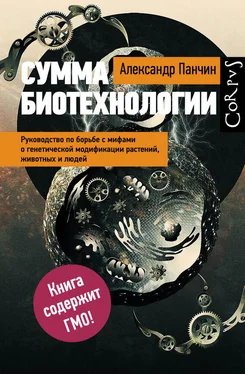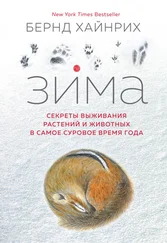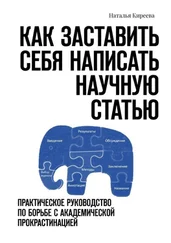77. Sanchez-Silva R. et al.: A new noncanonical nuclear genetic code: translation of UAA into glutamate. Curr Biol 2003, 13(5):442–7.
78. Wang L. et al.: Expanding the genetic code of Escherichia coli. Science 2001, 292(5516):498–500.
79. Fiers W. et al.: Complete nucleotide sequence of bacteriophage MS2 RNA: primary and secondary structure of the replicase gene. Nature 1976, 260(5551):500–7.
80. International Human Genome Sequencing C: Finishing the euchromatic sequence of the human genome. Nature 2004, 431(7011):931–45.
81. Leitch I.J.: Genome sizes through the ages. Heredity (Edinb) 2007, 99(2):121–2.
82. Goff S.A. et al.: A draft sequence of the rice genome (Oryza sativa L. ssp. japonica). Science 2002, 296(5565):92–100.
83. Carlton J.M. et al.: Draft genome sequence of the sexually transmitted pathogen Trichomonas vaginalis. Science 2007, 315(5809):207–12.
84. Ohno S.: So much “junk” DNA in our genome. 23058793 1972, 23: 366–70.
85. Adzhubei I. et al.: Predicting functional effect of human missense mutations using PolyPhen-2. Curr Protoc Hum Genet 2013, Chapter 7:Unit7 20.
86. Rands C.M. et al.: 8.2 % of the Human genome is constrained: variation in rates of turnover across functional element classes in the human lineage. PLoS Genet 2014, 10(7):e1004525.
87. Meader S. et al.: Massive turnover of functional sequence in human and other mammalian genomes. Genome Res 2010, 20(10):1335–43.
88. Ebersberger I. et al.: Genomewide comparison of DNA sequences between humans and chimpanzees. Am J Hum Genet 2002, 70(6):1490–7.
89. Fraser C.M. et al.: The minimal gene complement of Mycoplasma genitalium. Science 1995, 270(5235):397–403.
90. Ratner L. et al.: Complete nucleotide sequence of the AIDS virus, HTLV–III. Nature 1985, 313(6000):277–84.
91. Philippe N. et al.: Pandoraviruses: amoeba viruses with genomes up to 2.5 Mb reaching that of parasitic eukaryotes. Science 2013, 341(6143):281–6.
92. Suzan-Monti M. et al.: Genomic and evolutionary aspects of Mimivirus. Virus Res 2006, 117(1):145–55.
93. Ou C.Y. et al.: Molecular epidemiology of HIV transmission in a dental practice. Science 1992, 256(5060):1165–71.
94. Toups M.A. et al.: Origin of clothing lice indicates early clothing use by anatomically modern humans in Africa. Mol Biol Evol 2011, 28(1):29–32.
95. Levy S. et al.: The diploid genome sequence of an individual human. PLOS Biol 2007, 5(10):e254.
96. Griffith F.: The Significance of Pneumococcal Types. The Journal of hygiene 1928, 27(2):113–59.
97. Avery O.T. et al.: Studies on the Chemical Nature of the Substance Inducing Transformation of Pneumococcal Types: Induction of Transformation by a Desoxyribonucleic Acid Fraction Isolated from Pneumococcus Type Iii. The Journal of experimental medicine 1944, 79(2):137–58.
98. Overballe-Petersen S. et al.: Bacterial natural transformation by highly fragmented and damaged DNA. Proceedings of the National Academy of Sciences of the United States of America 2013, 110(49):19860–5.
99. Taleb N. et al.: The Precautionary Principle (with Application to the Genetic Modification of Organisms). EXTREME RISK INITIATIVE – NYU SCHOOL OF ENGINEERING WORKING PAPER SERIES 2014.
100. Berner R.A.: Atmospheric oxygen over Phanerozoic time. Proc Natl Acad Sci U S A 1999, 96(20):10955–7.
101. Schloss P.D., Handelsman J.: Status of the microbial census. Microbiol Mol Biol Rev 2004, 68(4):686–91.
102. Sears C.L.: A dynamic partnership: celebrating our gut flora. Anaerobe 2005, 11(5):247–51.
103. Kong A. et al.: Rate of de novo mutations and the importance of father’s age to disease risk. Nature 2012, 488(7412):471–5.
104. Kunkel T.A.: Evolving views of DNA replication (in)fidelity. Cold Spring Harb Symp Quant Biol 2009, 74:91–101.
105. Bostanci A.: Wildlife biology. A devil of a disease. Science 2005, 307(5712):1035.
106. Rebbeck C.A. et al.: Origins and evolution of a transmissible cancer. Evolution 2009, 63(9):2340–9.
107. Villeneuve P.J., Mao Y.: Lifetime probability of developing lung cancer, by smoking status, Canada. Can J Public Health 1994, 85(6):385–8.
108. Nelson P.N. et al.: Human endogenous retroviruses: transposable elements with potential? Clin Exp Immunol 2004, 138(1):1–9.
109. Mi S. et al.: Syncytin is a captive retroviral envelope protein involved in human placental morphogenesis. Nature 2000, 403(6771):785–9.
110. McClintock B.: The origin and behavior of mutable loci in maize. Proc Natl Acad Sci USA 1950, 36(6):344–55.
111. Kasahara M. et al.: On the origins of the adaptive immune system: novel insights from invertebrates and cold-blooded vertebrates. Trends Immunol 2004, 25(2):105–11.
112. Holland L.Z. et al.: The amphioxus genome illuminates vertebrate origins and cephalochordate biology. Genome Res 2008, 18(7):1100–11.
113. Kapitonov V.V., Jurka J.: RAG1 core and V(D)J recombination signal sequences were derived from Transib transposons. PLoS Biol 2005, 3(6):e181.
114. Panchin Y., Moroz L.L.: Molluscan mobile elements similar to the vertebrate Recombination-Activating Genes. Biochem Biophys Res Commun 2008, 369(3):818–23.
115. Tonegawa S.: Somatic generation of antibody diversity. Nature 1983, 302(5909):575–81.
116. Jolly C.J., Neuberger M.S.: Somatic hypermutation of immunoglobulin kappa transgenes: association of mutability with demethylation. Immunol Cell Biol 2001, 79(1):18–22.
117. Makarova K.S. et al.: Evolution and classification of the CRISPR-Cas systems. Nat Rev Microbiol 2011, 9(6):467–77.
118. Kyndt T. et al.: The genome of cultivated sweet potato contains Agrobacterium T-DNAs with expressed genes: An example of a naturally transgenic food crop. Proc Natl Acad Sci U S A 2015.
119. Matveeva T.V. et al.: Horizontal gene transfer from genus agrobacterium to the plant linaria in nature. Mol Plant Microbe Interact 2012, 25(12):1542–51.
120. Nikoh N. et al.: Wolbachia genome integrated in an insect chromosome: evolution and fate of laterally transferred endosymbiont genes. Genome Res 2008, 18(2):272–80.
121. Crisp A. et al.: Expression of multiple horizontally acquired genes is a hallmark of both vertebrate and invertebrate genomes. Genome Biol 2015, 16(1):50.
122. Zheng P. et al.: A phenylalanine in DGAT is a key determinant of oil content and composition in maize. Nat Genet 2008, 40(3):367–72.
123. Krishna V. et al.: Transgenic crops, production risk and agrobiodiversity. Eur Rev Agric Econ 2015.
124. Retraction notice to “Long term toxicity of a Roundup herbicide and a Roundup-tolerant genetically modified maize” [Food Chem. Toxicol. 50 (2012) 4221–4231]. Food Chem Toxicol 2014, 63:244.
125. Seralini G.E. et al.: Long term toxicity of a Roundup herbicide and a Roundup-tolerant genetically modified maize. Food Chem Toxicol 2012, 50(11):4221–31.
126. Langridge P.: Problems lie at several levels and bring into serious question the quality and standard of the editorial processes in your journal. Food Chem Toxicol 2013, 53:441.
127. Le Tien D., Le Huy H.: Comments on “Long term toxicity of a Roundup herbicide and a Roundup-tolerant genetically modified maize”. Food Chem Toxicol 2013, 53:443–4.
128. GrÜnewald W., Bury J.: Comment on “Long term toxicity of a Roundup herbicide and a Roundup-tolerant genetically modified maize” by Seralini et al. Food Chem Toxicol 2013, 53:447–8.
129. Barale-Thomas E.: The SFPT feels compelled to point out weaknesses in the paper by Seralini et al. (2012). Food Chem Toxicol 2013, 53:473–4.
130. Berry C.: Adverse effects in a feeding study of a GM derived corn in rats. Food Chem Toxicol 2013, 53:445–6.
131. Tester M.: It does not become the quality of a journal such as Food and Chemical Toxicology to publish such poor work. Food Chem Toxicol 2013, 53:457.
Читать дальше
Конец ознакомительного отрывка
Купить книгу




![Александр Панчин - Гарвардский Некромант [litres]](/books/390749/aleksandr-panchin-garvardskij-nekromant-litres-thumb.webp)


![Александр Панчин - Апофения [litres]](/books/435337/aleksandr-panchin-apofeniya-litres-thumb.webp)




